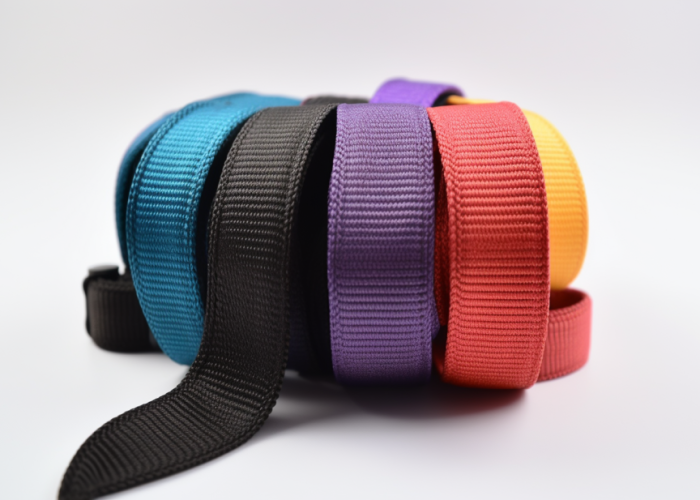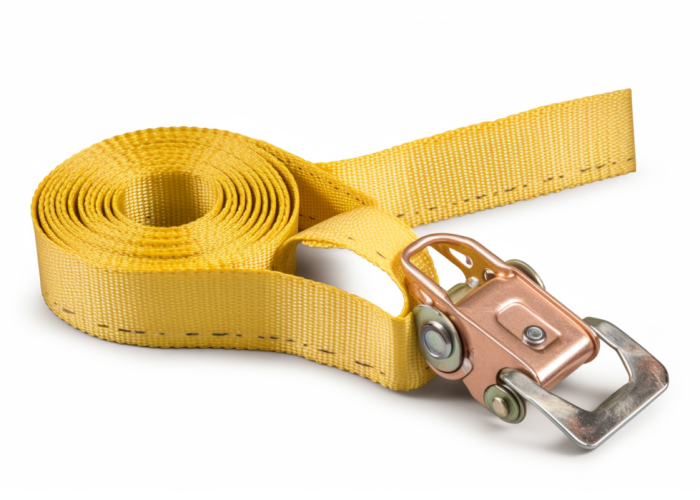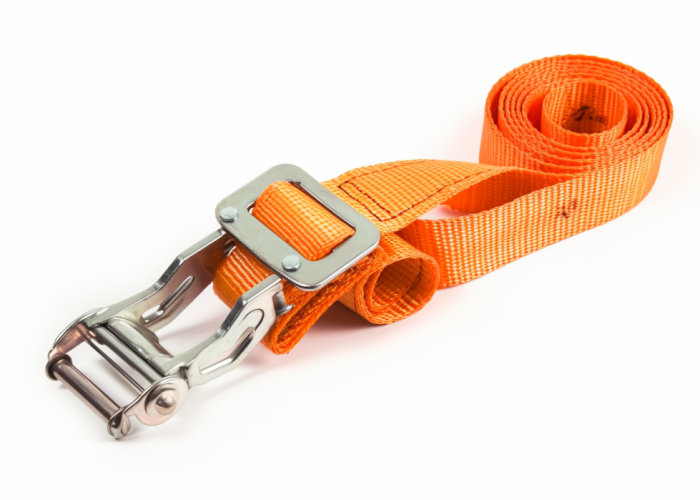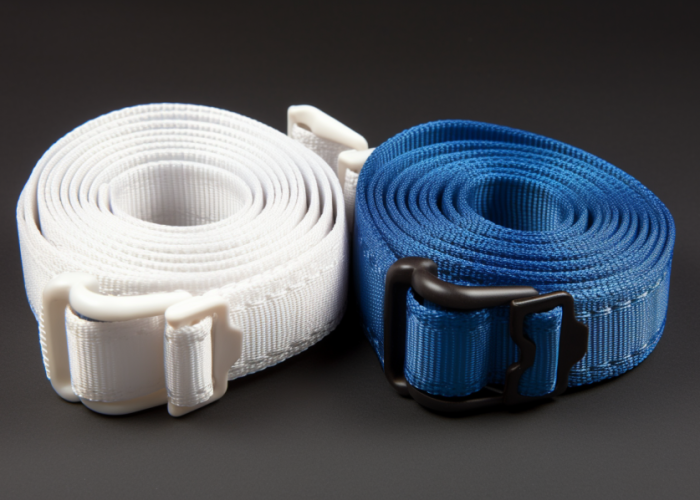Tensioned webbing systems have revolutionized recreational balance activities across multiple industries. Understanding the fundamental components, materials, and technical specifications of slacklines is essential for creating innovative balance-based equipment that meets specific performance requirements.
Slacklines are flexible nylon or polyester webbing, typically 1″ or 2″ wide, tensioned between two anchor points used for walking, balancing, and performing tricks. Unlike tightropes, slacklines feature specialized tensioning hardware that creates a dynamic, bouncy surface suitable for various skill levels—from beginners practicing basic balance to advanced users performing aerial maneuvers.
Discover key materials, specs, and manufacturing tips for designing high-performance slacklines tailored to your application and environmental needs.


Webbing manufacturing expert with 15+ years of experience helping product developers build high-performance straps for industrial, medical, and outdoor use.
Nylon and polyester are the most common slackline webbing materials, with specialized applications using HMWPE and Dyneema/Kevlar blends. These materials offer different performance characteristics including stretch percentage, durability, and weight that determine their suitability for recreational, competitive, or specialty applications.
Nylon remains the traditional choice for many slackline manufacturers due to its excellent strength-to-weight ratio and superior durability. This material offers natural elasticity that provides the characteristic bounce and feel that many slackers prefer. The inherent stretching quality of nylon (typically 5-7% at standard tensions) makes it particularly suitable for dynamic tricks and movements, though this same property can make initial rigging more challenging as the line needs to be retensioned frequently during setup.
Polyester has emerged as a popular alternative for many applications, particularly where consistent performance is required. With only 2-3% stretch at standard forces, polyester slacklines maintain more consistent tension throughout use, resulting in faster setup and takedown times. The reduced elongation makes polyester particularly well-suited for longlines (exceeding 100 feet) where excessive stretch would make tensioning difficult. Additionally, polyester takes coating well, making it ideal for applications where specialized surface treatments enhance performance or durability.
For high-performance applications, advanced materials like Tubeweb (HMWPE) deliver exceptional strength-to-weight ratios. This Ultra-High-Molecular-Weight Polyethylene provides extremely low stretch characteristics while maintaining superior abrasion resistance—10-15 times more resistant to abrasion than carbon steel according to industry testing. These properties make HMWPE ideal for highline applications where minimal stretch and maximum safety are paramount.
Nylon webbing stretches 5-7% with excellent shock absorption, while polyester stretches only 2-3% with more consistent tension and faster setup. These fundamental differences create distinct performance characteristics that determine their suitability for various slackline applications and user preferences.
Nylon’s natural elasticity creates a more dynamic, bouncy feel that many enthusiasts prefer for trick-oriented slacklining. This elasticity serves as built-in shock absorption, making nylon more forgiving during falls or sudden movements. The increased stretch does require more skill during initial setup, as the material continues to elongate after initial tensioning, often necessitating readjustment to achieve proper tension. For applications where energy return and responsiveness are priorities, nylon provides natural advantages that cannot be replicated with lower-stretch materials.
Polyester delivers more consistent performance with minimal elongation during use. This stability makes polyester particularly valuable for longline setups where excessive stretch would make proper tensioning nearly impossible. The reduced stretch also results in a more stable, predictable feel that some users prefer, particularly for static poses or precision movements. Setup efficiency improves significantly with polyester, as the material reaches its final elongation point much faster than nylon, reducing the need for ReTensioning during the rigging process.
From a manufacturing perspective, polyester generally offers better coating adhesion for specialized treatments that enhance UV resistance, water repellency, or specialized performance characteristics. This property allows manufacturers to apply more consistent performance-enhancing treatments without compromising the material’s core structural integrity.

Standard slacklines come in 1″ or 2″ widths with lengths ranging from 15-60 feet for beginners to over 100 feet for advanced use. These dimensions vary based on the intended application, skill level of users, and specific performance requirements.
Width selection fundamentally impacts stability and performance characteristics. The 1″ width has traditionally been preferred for performance-oriented applications where weight reduction and responsiveness are priorities. Advanced users typically favor this narrower dimension for tricklining and competitive use. The 2″ width provides approximately 100% more surface area, offering dramatically improved stability for beginners while distributing load more evenly. This wider profile has become standard in general slackline parks and recreational settings where user comfort and accessibility are priorities.
Length categories correspond directly to intended use cases and setup methods:
The combination of width and length selection directly impacts the overall feel, tension characteristics, and usability of the finished product. For example, a 2″ x 50′ setup with a ratchet tensioning system provides an ideal beginner-friendly configuration, while a 1″ x 100’+ setup with specialized tensioning equipment delivers the performance characteristics required for advanced tricks or competitions.
High-performance slackline webbing requires 300-550+ hours UV resistance, 4,000-8,000+ lbs tensile strength, precise elongation control, and industry safety certification. These specifications directly determine durability, safety factors, and suitability for specific slackline applications.
UV resistance represents one of the most critical durability factors, with industry standards requiring a minimum of 300 hours resistance to maintain structural integrity during extended outdoor use. Premium materials often deliver 550+ hours of UV resistance, significantly extending operational lifespan in high-exposure environments. This specification directly impacts product longevity and maintenance requirements, particularly for permanent or semi-permanent installations.
Tensile strength parameters vary substantially based on intended application, with general-purpose slacklines requiring 4,000-5,000 lbs rating while high-performance and competition lines may require 8,000+ lbs capacity. The strength-to-weight ratio becomes particularly important for longlines and highlining applications where weight must be minimized while maintaining essential safety factors. Advanced materials like HMWPE deliver exceptional tensile strength with minimal weight, though at significantly higher production costs.
Elongation characteristics fundamentally define the feel and performance of the finished product:
Edge resistance and abrasion factors determine long-term durability, particularly for applications involving contact with rough anchor points or environmental elements. Enhanced edge construction techniques, specialized coatings, and material selection all contribute to this critical performance metric, with high-performance materials offering 10-15 times greater abrasion resistance than standard options.

Slackline performance can be enhanced through specialized coatings, pattern variations, selective reinforcement, and proprietary weaving techniques that optimize stretch, friction, and durability. These customization options allow for precise performance tuning to meet specific application requirements.
Specialized coatings represent one of the most effective customization methods, with UV-resistant formulations extending operational lifespan by 30-50% compared to untreated materials. Heat-resistant coatings applied to critical wear points near anchoring systems prevent degradation from friction-generated heat during tensioning. Water-repellent treatments maintain consistent performance characteristics in wet conditions without adding significant weight or altering fundamental material properties.
Pattern variations significantly impact both performance and aesthetics. Traditional tubular-woven slackline webbing typically stretches 5-8% less than flat-woven webbing of identical width due to its closed construction distributing tension more evenly. Herringbone patterns provide more controlled stretch than plain weave configurations while maintaining similar breaking strength. These structural variations allow manufacturers to fine-tune performance characteristics without changing base materials.
Selective reinforcement techniques strategically enhance critical areas without adding unnecessary weight to the entire system. Edge reinforcement using specialized stitching or material layering can improve durability at common failure points. Graduated thickness profiles optimize weight distribution and performance characteristics across the line’s length, with thicker sections near anchoring points transitioning to lighter mid-span sections.
Our manufacturing facilities can produce custom webbing solutions with proprietary weaving techniques that create hybrid constructions blending the beneficial properties of multiple materials. These techniques engineer specific stretch zones, creating slackline webbing with varied performance characteristics along its length—providing stability near anchoring points while maintaining desirable dynamic properties mid-span.
Advanced manufacturing processes improve slackline durability through heat-setting, multi-stage coatings, integrated UV stabilizers, and precision tensioning during production. These methodologies extend operational lifespan and maintain consistent performance characteristics throughout the product life cycle.
Heat-setting techniques applied during manufacturing permanently stabilize the webbing structure, reducing initial stretch and improving dimensional stability throughout the product’s lifespan. This process involves precisely controlled temperature application during specific production phases, effectively “training” the material to maintain its intended properties. The result is more consistent performance from first use through extended operation, with significantly reduced break-in periods compared to conventionally manufactured webbing.
Multi-stage coating applications create layered protection systems that address different environmental threats while reinforcing structural integrity. The primary coating typically provides UV protection and water resistance, while secondary applications focus on abrasion resistance and surface texture optimization. This stratified approach allows manufacturers to address multiple performance requirements without compromising core functionality, effectively extending operational lifespan by 40-60% compared to single-layer coatings.
Integrated UV stabilizers incorporated directly into the base material (rather than applied as coatings) provide much more consistent protection throughout the product’s useful life. This integration method prevents protection degradation from surface wear, maintaining critical UV resistance even after extended use. Advanced stabilizer formulations can extend UV resistance from the standard 300 hours to 550+ hours without significantly impacting other performance characteristics.
Precision tensioning during the manufacturing process ensures consistent fiber alignment and load distribution across the entire webbing width. This alignment optimization maximizes strength while minimizing weight, resulting in more consistent performance characteristics and improved durability under varied load conditions. Specialized tensioning equipment monitors and adjusts fiber tension hundreds of times per second during production, creating unprecedented structural consistency throughout the finished product.

Material selection affects production efficiency with HMWPE and Dyneema/Kevlar costing 4-5 times more than nylon or polyester while requiring specialized equipment and 40-80% longer production times. These factors create significant planning and cost implications that must be balanced against performance requirements.
Standard materials like nylon and polyester offer substantial production advantages with readily available supply chains, standardized manufacturing processes, and predictable lead times. These materials typically require 30-40% less production time than specialized alternatives, with significantly lower raw material costs and minimal specialized equipment requirements. For high-volume production, these efficiency advantages translate directly to improved margin potential and manufacturing flexibility.
High-performance materials introduce substantial production complexities that extend manufacturing timelines. HMWPE requires specialized handling procedures and equipment modifications that can extend production cycles by 40-60% compared to standard materials. The extreme strength-to-weight characteristics that make these materials desirable also make them more challenging to process, requiring specialized expertise and equipment calibration to maintain consistent quality.
Hybrid materials combining Dyneema and Kevlar present some of the most significant production challenges, requiring specialized weaving equipment and precise tension control throughout the manufacturing process. These materials can extend production timelines by 60-80% compared to standard options, with substantially higher raw material costs. The resulting performance advantages must justify these production inefficiencies through premium pricing or application-specific benefits that cannot be achieved with standard materials.
Material availability and supply chain considerations also impact production planning, with specialized materials often requiring longer lead times and minimum order quantities that can affect inventory management strategies. Standard materials typically offer much more flexible procurement options with shorter lead times and smaller minimum orders, allowing for more responsive production scheduling and reduced inventory carrying costs.
Selecting the optimal webbing for slackline production requires balancing technical performance with manufacturing feasibility. Whether you need UV-resistant nylon for dynamic applications or precision-engineered polyester for longlines, our custom webbing manufacturing facilities can deliver tailored solutions with industry-standard certifications and flexible production capabilities to meet your specific slackline development requirements.
Slackline webbing should comply with UIAA or CE safety standards which establish minimum breaking strength requirements of 4,000-5,000 lbs for recreational use and 8,000+ lbs for highlining applications. These certifications ensure proper load testing and quality control throughout the manufacturing process.
UV resistance directly determines webbing lifespan, with standard materials requiring minimum 300-hour ratings and premium materials offering 550+ hours of protection. Each 100-hour increase in UV resistance typically extends operational lifespan by 15-20% under normal outdoor use conditions.
Nylon webbing (5-7% stretch) requires ratchet systems with longer throw capacity, while polyester and HMWPE (2-3% stretch) work effectively with standard ratchets or primitive tensioning systems. Material selection should always precede tensioning system design to ensure proper function.
2″ polyester webbing excels for yoga and beginner applications, 1″ nylon for tricklining and dynamic movements, and 1″ HMWPE/Dyneema blends for highlining and longlines. Each discipline benefits from specific material properties that enhance performance in that particular application.
Entry-level webbing typically uses nylon or polyester with basic UV protection, while high-tech options incorporate HMWPE or Dyneema/Kevlar blends with advanced coating systems. The performance difference includes 200-300% greater abrasion resistance and 30-50% higher strength-to-weight ratios in high-tech materials.
Standard materials (nylon/polyester) cost $0.50-1.50/ft with 2-3 year lifespans, while premium materials (HMWPE/Dyneema) cost $4-7/ft with 5-8 year operational lifespans. The 4-5x price premium for advanced materials is offset by 2-3x longer service life and superior performance.